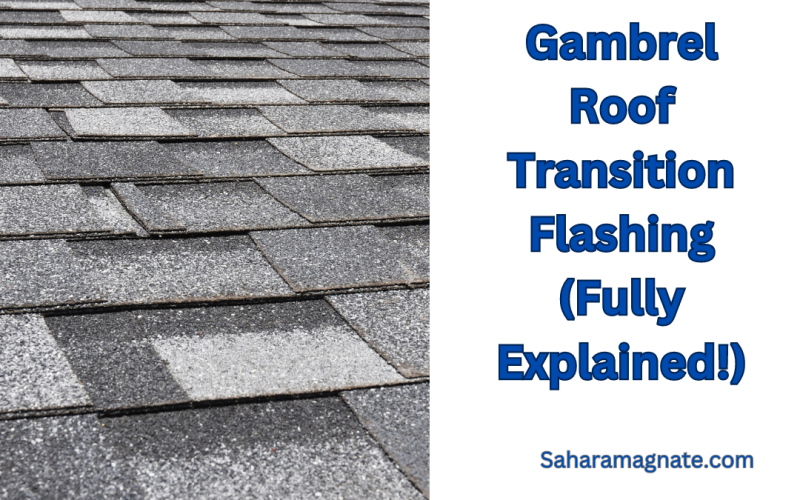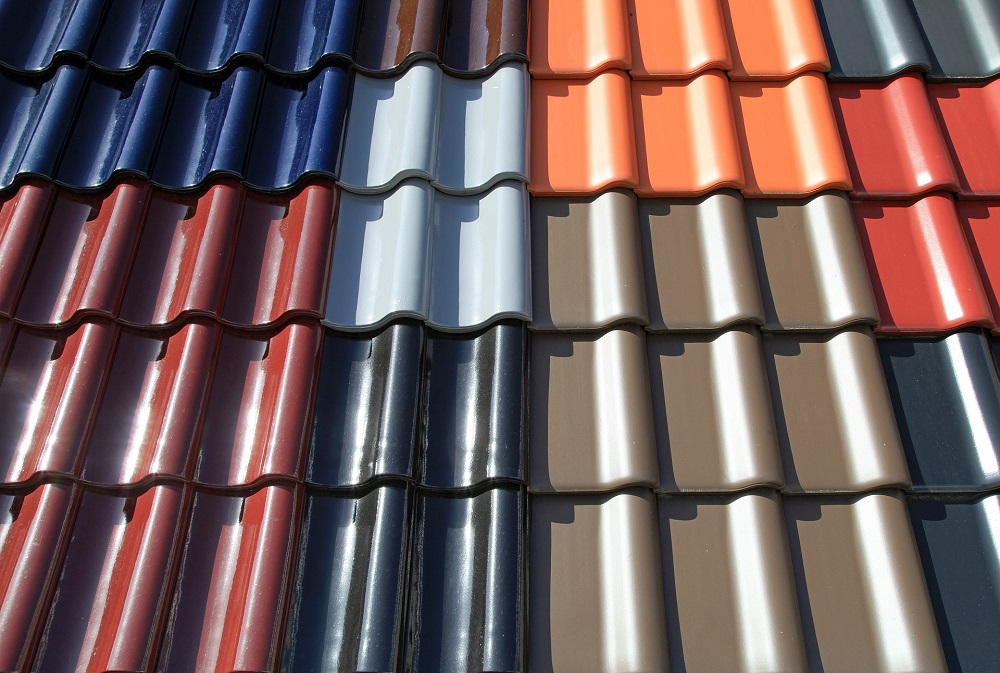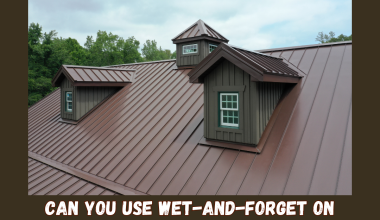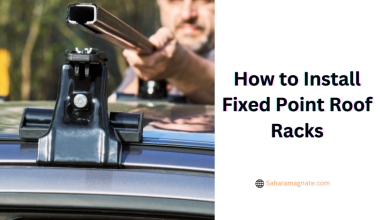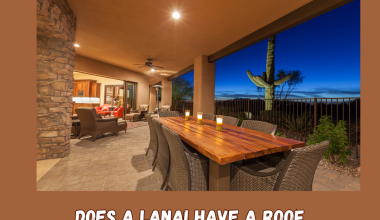In reality, most roofs aren’t simple and straight but rather a combination of angles, slopes, and curves.
As such, transitioning from one type of roof to another can present some unique challenges regarding proper installation.
Adding a layer of complexity into the mix is that not all roofing contractors have the skill or experience to complete these transitions correctly.
That’s where Gambrel roof transition flashing comes in! In this article, you’ll learn everything you need to know about Gambrel roof transition flashing—from its purpose and components to how it needs to be installed.
Gambrel roofs are defined by their two distinct sections: the steep upper slope and the gentle lower slope.
While having a “double-pitched” style like this adds a lot of visual appeal to your property, it also adds complexity when transitioning from one type of roofing material to another—that’s where proper flashing plays an important role.
What is Gambrel Roof Transition Flashing?
Gambrel roof transition flashing is a specialized flashing used for roofs with a gambrel (or “barn”) style shape.
If you have this type of roof in your home, you must take special care to ensure that the transition from one side of the roof to the other is sealed and secure. That’s where transition flashing comes in!
Gambrel roof transition flashing comprises two parts: a kick-out piece that acts as a diverter, redirecting water away from your wall, and a base piece that fits underneath and directs water away correctly.
The kick-out piece should be installed at least six inches above your roofline, and the base piece should be secured with nails.
In addition to ensuring proper water drainage and keeping your walls dry, gambrel roof transition flashing can improve energy efficiency in your home as it helps keep warm air inside during winter and cool air inside during summer.
It’s an essential element of any gambrel-style roof — so don’t forget when installing or replacing yours!
Common Types of Gambrel Roof Transitions
When transitioning from a gambrel roof to a regular hip roof, you’ll need some kind of transition flashing.
Here are the two common types:
- L-Shape Flashing
An L-shaped flashing is typically used for transitions between roofs with different slopes.
The L-shaped flashing is installed onto the roof deck and comes in two parts—a base and a cap.
It is usually made from galvanized steel or copper and secured with screws. This type of flashing is excellent for water drainage off your roof.
But remember that it may need to be replaced more often than other types of flashing due to its exposed location and exposure to harsher elements like wind and rain.
- Step Flashing
Step flashing can also be used for transitions between roofs with different slopes. Again, this type of flashing is generally made out of galvanized steel or copper and secured with nails or screws.
But it’s designed with bends and steps, allowing movement between the two different slopes.
This allows for optimal water drainage off your roof since it won’t easily clog up from debris buildup like other types of flashing can.
The steps also provide an extra layer of protection against water damage since they provide a tight seal between the two roof sections.
Proper Installation of Gambrel Roof Transitions
To properly install Gambrel Roof Transition Flashing, paying particular attention to details is vital.
After all, the transition flashing is an integral part of the roof’s water-shedding system and needs to be correctly sealed to prevent water infiltration.
Here are the steps you should take when installing Gambrel Roof Transition Flashing:
- Place a long strip of the metal flange against the upper edge of the lower roof section, ensuring it overlaps the lower edge by at least one inch.
- Apply a bead of roofing cement along each side of the flange and on top of it.
- Set the transition flashing onto the metal flange and press down firmly, ensuring no gaps or openings remain around its edges.
- Using a hammer and metal nails, secure the flashing by driving one nail near each corner, then repeat with other nails spaced about every six inches along each side and end of the flashing.
- Apply another generous bead of roofing cement along both sides and top edges of the transition flashing and smooth out any excess with a putty knife or trowel.
- Covernail any exposed nails with additional roofing cement and allow everything to dry before continuing with shingle installation on both sides of the transition flashing.
- Ensure all transitions are appropriately installed using field-tested products that meet ASTM standards for asphalt shingle roofs.
By taking your time during installation, Gambrel Roof Transition Flashing will help ensure your Gambrel roof is durable and better able to resist water infiltration well into old age!
Flashing Materials Used in Gambrel Roof Transitions
When it comes to transition flashing materials, there are a few choices you can pick from when it comes to your gambrel roof.
Each offers different benefits, so consider your priorities and needs for your particular choice.
Here’s a breakdown of the popular materials used for transition flashing:
Copper
One of the most common choices for transition flashing is copper or stainless steel. Copper is a durable and malleable metal easily molded into different transition shapes, so it’s perfect for gambrel roofs.
Its corrosion resistance is also unbeatable, enabling it to handle extreme temperature changes, moisture levels, and other environmental changes.
Aluminum
Another popular choice is aluminum transition flashing. Aluminum has similar malleability properties as copper-based ones but with added cost-effectiveness.
It’s also lightweight, so it won’t weigh down your roofing structure as heavier metals like steel might do.
Plus, aluminum is great at reflecting UV rays—plus its low cost makes this an attractive option for those on a budget.
Steel
Steel transition flashing can offer more stability and strength than other materials like aluminum or copper, making it ideal if you need something more heavy-duty and long-lasting.
It’s also great if you want something polished—unlike aluminum which can oxidize over time and look dull.
However, steel is more expensive than other materials and less malleable than aluminum or copper-based options.
Benefits and Drawbacks of a Gambrel Roof Transition
When it comes to roofing, not all roofs are created equal. A gambrel roof is an interesting design choice for a roof because it often requires transition flashing.
But what are the benefits and drawbacks of installing a gambrel roof transition flashing?
Benefits
The main benefit of using a gambrel roof transition flashing in your home is its esthetic appeal.
A gambrel roof gives your house a unique look that stands out from other homes in the neighborhood.
Additionally, it provides extra insulation and can reduce energy costs over time. It can also provide extra space in the attic since there is more room between the two sections of the roof.
Drawbacks
On the flip side, a gambrel roof is more challenging to install than other types of roofs because it has to be cut and angled differently for each section. This can add to installation costs and usually takes more time to install correctly.
Additionally, regular maintenance needs to be performed on the sections of the gambrel style, such as cleaning gutters and ensuring seals are in place and not worn away due to extreme weather conditions or aging materials.
Conclusion
All in all, Gambrel roof transition flashing is an integral part of a well-maintained roof that can save you a lot of headaches and energy down the line.
It takes a bit of knowledge and effort to install, and you may want to consult with a professional to get it right the first time, but keeping your home dry, safe, and secure is worth it.
So take the time to understand the importance of Gambrel roof transition flashing and ensure it’s properly installed on your roof. It can be the difference between a quality roof and a leaky one.
